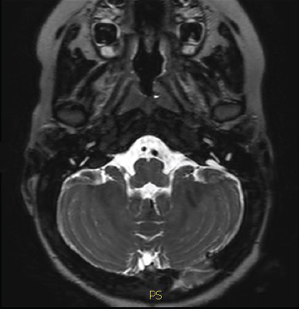Is magnetic resonance imaging (MRI) a cost-effective practice in the workup of undifferentiated asymmetric sensorineural hearing loss (ASNHL)?
Bottom line
Pursuing MRI in patients with documented ASNHL is a cost-effective strategy, and is more cost-effective than observation.
Explore This Issue
April 2017
Deafness from enlarged vestibular aqueduct see on an MRI.
© Komsan Loonprom / shutterStock.com
Background: The differential diagnosis of ASNHL encompasses a wide variety of causes, with no responsible etiology identified in the vast majority of patients. A small but not insignificant portion may be caused by cerebellopontine angle (CPA)/internal auditory canal (IAC) lesions, most notably acoustic neuromas. Understanding when to pursue imaging has become increasingly important in the current healthcare environment.
Study design: Retrospective literature review/decision tree regarding five studies for T1 gadolinium-weighted MRI (GdT1W) and nine studies for T2 weighted MRI without contrast (T2MR).
Setting: Department of Otolaryngology–Head and Neck Surgery, Wayne State University School of Medicine, Detroit, Mich.
Synopsis: The cost for using GdT1W, T2MR and no imaging were $1,127, $560, and $278, with an effectiveness of 0.52, 0.51, and 0.48, respectively. The incremental cost-effectiveness ratio (ICER) of pursuing GdT1W was $27,660 and of pursuing T2MR was $15,943, which were both below the acceptable willingness to pay (WTP) thresholds of $30,000 and $50,000. At a $50,000 WTP threshold, GdT1W and T2MR were more cost-effective when the incidence of intracranial pathology was above 2.9% and 2.2%, respectively; for GdWT1 and T2MR imaging to be more cost-effective than no imaging, they would have to cost less than $2,037 and $1,756 each. GdT1W was more cost-effective than no imaging, with 54.4% and 83.5% certainty at $30,000 and $50,000 WTP thresholds. T2 imaging was more cost-effective compared to no imaging, with certainty of 75.2% and 92.6% at $30,000 and $50,000 WTP thresholds.
Citation: Hojjat H, Svider PF, Davoodian P, et al. To image or not to image? A cost-effectiveness analysis of MRI for patients with asymmetric sensorineural hearing loss. Laryngoscope. 2017;127:939–944.